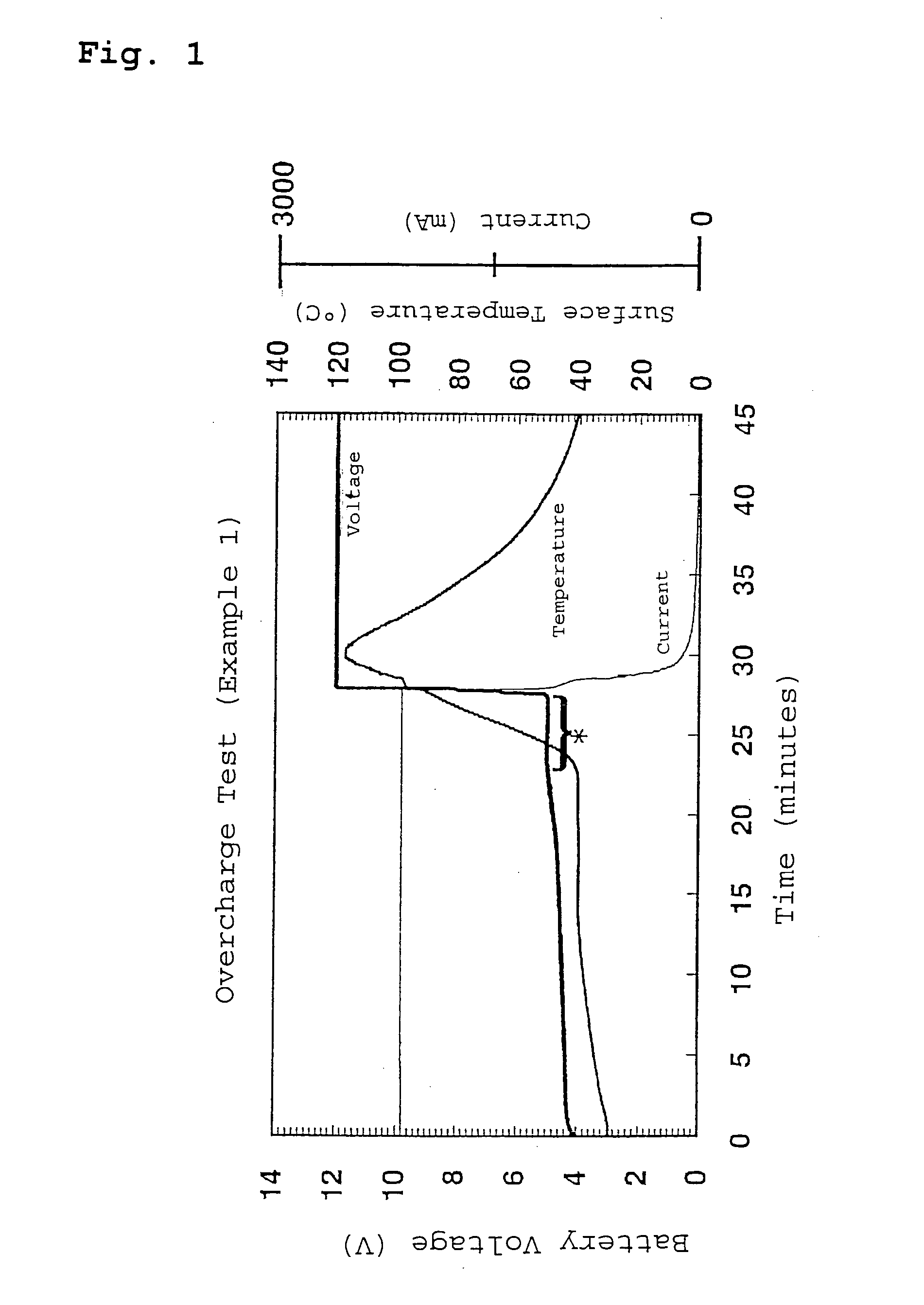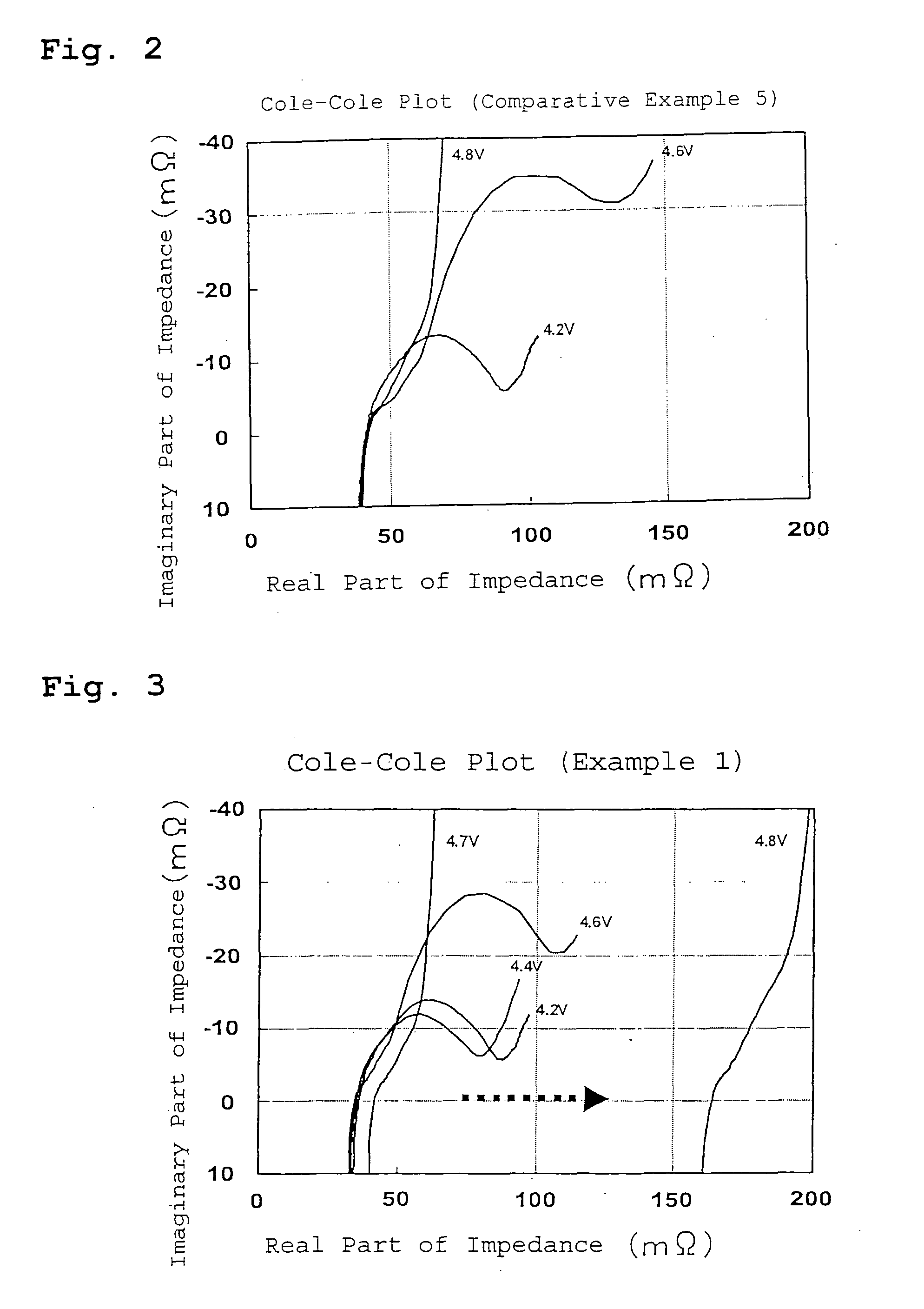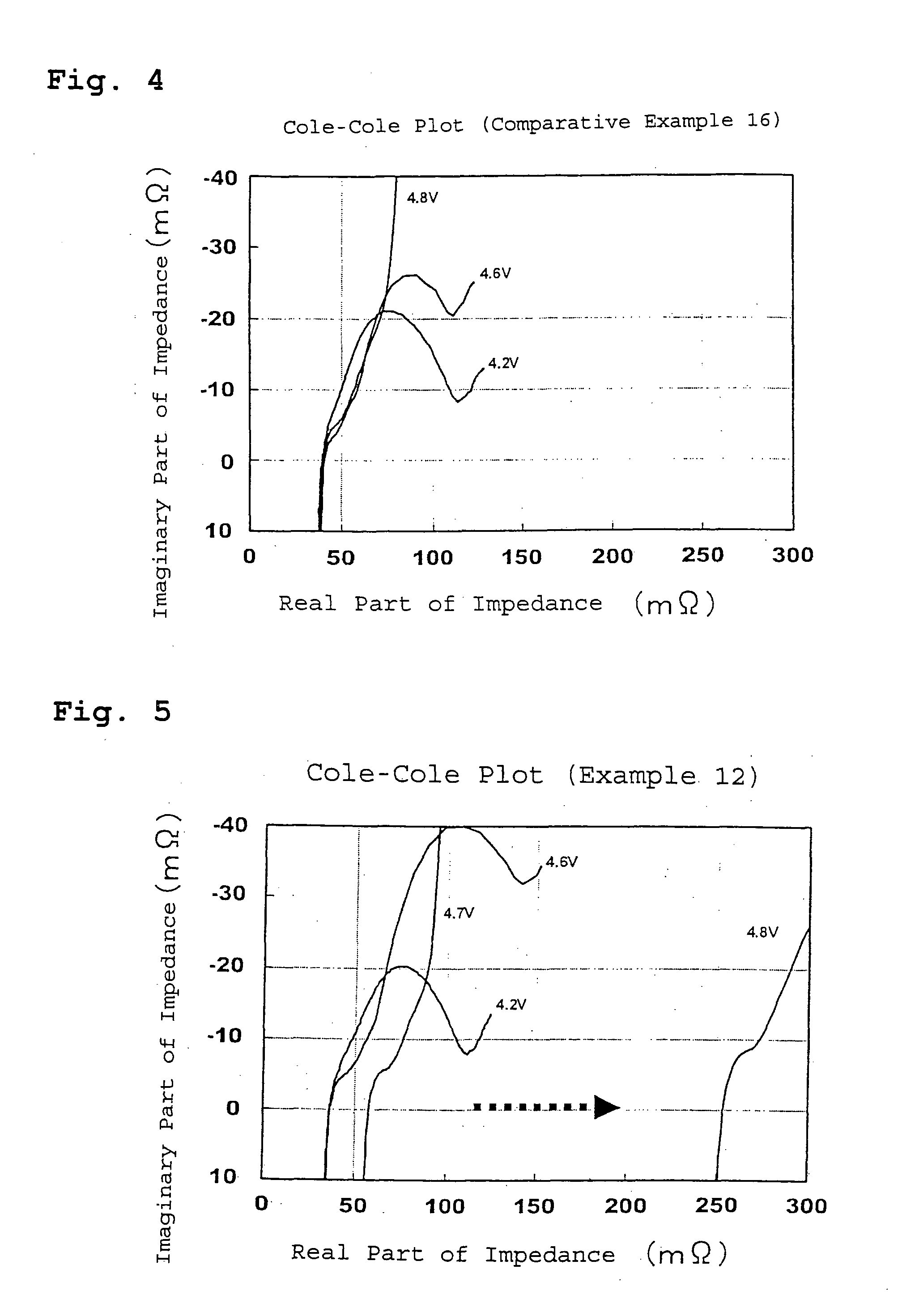Lithium secondary battery
- Summary
- Abstract
- Description
- Claims
- Application Information
AI Technical Summary
Benefits of technology
Problems solved by technology
Method used
Image
Examples
example 1
[0036] A lithium secondary battery of Example 1 was prepared as described below.
[0037] Preparation of Positive Electrode
[0038] Lithium cobalt oxide as a positive electrode active material and graphite as a carbon conductive agent were mixed at a ratio by mass of 92:5 to prepare a positive electrode mixture powder. The positive electrode mixture powder was applied to a mechanofusion apparatus (Hosokawa Micron Co. Model No. AF-15F), and the apparatus was operated at 1,500 rpm for ten minutes to apply pressure, impact and shear force to the powder. Then the positive electrode mixture powder was mixed with polyvinylidene fluoride (PVDF) as a fluorine resin binder in N-methylpyrrolidone (NMP) in a ratio by mass of 97:3 to make a slurry. Then the slurry was coated on both sides of an aluminum foil and dried, and was pressure rolled to prepare a positive electrode sheet.
[0039] Preparation of Negative Electrode
[0040] Natural graphite as a negative electrode active material and styrene-butad...
example 2
[0045] A battery of Example 2 was prepared in the same manner as the battery of Example 1 except that tetrahydrofuran (THF) was used instead of 1,2-dimethoxyethane (DME).
example 3
[0046] A battery of Example 3 was prepared in the same manner as the battery of Example 1 except that 2-methyltetrahydrofuran (2-MeTHF) was used instead of 1,2-dimethoxyethane (DME).
PUM
 Login to View More
Login to View More Abstract
Description
Claims
Application Information
 Login to View More
Login to View More - R&D
- Intellectual Property
- Life Sciences
- Materials
- Tech Scout
- Unparalleled Data Quality
- Higher Quality Content
- 60% Fewer Hallucinations
Browse by: Latest US Patents, China's latest patents, Technical Efficacy Thesaurus, Application Domain, Technology Topic, Popular Technical Reports.
© 2025 PatSnap. All rights reserved.Legal|Privacy policy|Modern Slavery Act Transparency Statement|Sitemap|About US| Contact US: help@patsnap.com



